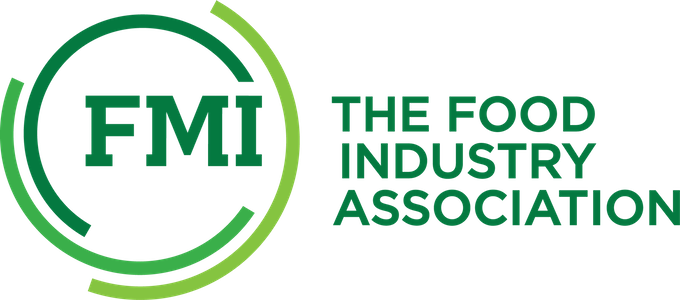Jon Stine, who leads the Open Voice Network, spoke with Lippincott partner David Mayer about AI-voice, the fast-moving software mash-up that will soon be the principal way we interact with the digital world. An edited version of the interview follows.
Why should we pay attention to this voice fad? Isn’t it just all about those smart speakers?
It’s a whole lot more than smart speakers. In fact, it’s perhaps the fastest growing consumer-technology innovation since the smartphone. Three things to remember:
First, we need to understand artificial intelligence-enabled voice (AI-voice) as a fast- developing software mash-up. This is about software, not hardware – it’s software that will let you talk to the internet, smart things, and enterprise applications through any digital device – smartphones, personal computers, remote controls, appliances (from refrigerators to coffeemakers), and automobiles, as well as home-based smart speakers. It will soon be the most-used way we interact with the digital world. According to Juniper Research’s recent study, some 3.25 billion voice assistants will be in use in 2019, growing to roughly 8 billion by 2023 – a compounded annual growth rate of more than 25 percent. In addition, roughly one in eight Google searches in 2018 were conducted via voice – which is approximately 250 billion voice searches.
Second, AI-enabled voice will reshape digital usage. Voice offers the ultimate usage ease and convenience; there’s no typing, tapping, or swiping – you simply talk. With AI-voice, channels are changed and preferences remembered; customer questions of order status and shipping are accurately answered to 24-7 delight; workers file reports (and enter data) sans keyboards; and shopping is done in moments from the kitchen or the car.
Third, today’s AI-voice environment is like the early, pre-standards days of the internet. There’s no recognized registry of destination or dispatch names, no assured way for consumers to find companies or brands. There are significant issues of personal and commercial data use and privacy. Market leaders have created proprietary, gated AI-voice platforms and ecosystems. In such an environment, there’s a critical need for leaders – enterprise users and developers alike – to join together and develop the standards that will unleash this transformative technology. Standards that will encourage use and growth. Standards that will enable competitive differentiation.
Why is this of concern to grocery and FMCG retailers?
Two reasons. The first is about your brand in the current “Wild West” voice environment. Given the market position of the proprietary platforms, will consumers be able to confidently and consistently find your company and your brands? Will business-critical commercial (and customer) data be claimed (and used) by proprietary platform providers – and/or your product offers elbowed aside by theirs? Will your IT shop be forced to manage skills and actions across some 18-20 different platforms – or will they be able to build once and use many? Will the costs of search optimization accelerate– especially in the current proprietary environment, and in the winner-take-all reality of voice-based search?
The second is about rapidly changing consumer behavior, and the accelerating growth of digital retailing. Simply stated: consumers are beginning to shop with voice. According to eMarketer’s March 2019 study, digital grocery revenues are expected to grow nearly 20 percent per year for at least the next five years. And the experts from FMI tell us that grocery e-commerce revenue could reach $100 billion or more in the US by the year 2022. That’s nearly 10 percent of the market, and three years from now. Recent research shows clearly that AI-voice assistance is now being used by consumers in the selection, purchase, and post-purchase management of products and services. A November 2018voicebot.ai study found that 24.8 percent of US respondents regularly used a smartphone-based voice assistant to research products before purchase.
Is this just an IT issue?
No. This is about the brand connecting with consumers. This is about revenue and market share. This is about data and data security. Thus, this is a topic for CEOs, chief strategists, CMOs, CIOs, CDOs, CTOs, and CSOs.
Why should a company like mine devote money and time to standards development?
Quite simply, it pays. Standards inevitably help grow the market. And enterprises that are active in standards development drive efficiencies, gain market access, and create competitive differentiation faster than those that don’t. From a market-share point of view, the question is whether you or your competitors will guide the future of the technology.
For more than a century, voluntary standardization and conformity assessment activities have grown usage, strengthened markets, and saved money for private and public-sector entities. By participating in standards development activities that touch your products and services – and by implementing standards and conformance tools that streamline development processes and trim costs – companies build market share and boost bottom lines.
What standards are needed for AI-voice?
Industry technology standards and guidelines that will encourage ecosystem development and innovation. Standards similar to those that enabled the remarkable growth of the internet. Standards that encourage the development of a commercial ecosystem and competitive differentiation.
Such standards for AI-voice could address:
- A global wake and destination registry – a Domain Name System (DNS) for voice
- User identification and authentication in a multi-platform, multi-destination environment
- Issues of personal and commercial data privacy
- Interoperability
- The use of voice in common, non-differentiating commerce processes
Does voice present unique issues in regards to consumer data privacy?
Yes. Voice is extremely data-rich. It is a biometric identifier, and can enable diagnosis not only of sentiment (consumer confidence, for instance), but selected physical and mental illnesses. For these and many other reasons, it is important to develop a neutral, considered perspective on the issue of voice and data privacy.
In a conversational world, choices will necessarily be narrower than browsing an aisle or browsing online. How does a retailer ensure that they are one of those choices?
First, conversational AI is not and will not be a stand-alone brand development strategy or tactic. Instead, it will be a key element within an overall online-to-offline (O2O) digital shopping strategy that combines existing brand value propositions with an increasingly essential ease/convenience value proposition. In sum: brand advantage, easily obtained.
Tactically, the latter might include options for out-of-store selection and purchasing (item-by-item, weekly top-up replenishment), options for fulfillment (pickup in-store, deliver to home, deliver to location), options for payment, and ever-more-personal reminders and notifications (special days, new products, offers). Voice will be a priority communication/ contact tool within that set of tactics – because it will be a primary and expected way consumers will connect with the brand.
Second, voice will most likely reach its full user value in multi-modal use; that is, both voice and vision. Voice will be the interface for a smartphone app that shows product options, or a voice-and-vision kitchen-based device that offers similar capabilities. Shoppers will see it, read it, and then speak to it – and have it speak back to them.
Third, as shown in multiple examples, voice assistance can be a marvelous delivery mechanism for value-adding – and revenue-enhancing – services that build brand loyalty: recipes, cooking and product selection advisories, how-to’s for special dishes or preparation. Think a combination of Instagram and Alexa. Its future is that of a conversational, advisory, thinking-on- your-behalf personal assistant – one that happens to also offer the brand benefit of listening. Conversational assistants offer the potential of an always-on customer response focus group.
Fourth, the ease and convenience of voice – and its “directness” to a brand – will, we believe, increasingly bond a shopper to a retail brand. Those brands that make it easy, make it convenient, make it as simple as saying the word – they’ll create a bond that will be very hard to break. Of course, such ease and convenience must be accompanied by benchmark-or-better operational performance throughout the entire purchase journey.
In a world where many retailers are still working to improve technologies like smart tagging for better online search, how should they prioritize voice versus competing demands? What's most urgent with regards to voice?
This coming year, it’s estimated that more than 40 percent of all US internet users will regularly use voice assistance. That’s a cohort that’s younger, more affluent, and 52 percent female. They will want to connect with you – or a competing brand – via voice. All other things being equal, they will choose the brands that save time or enhance time, as NYU Professor Scott Galloway wrote recently. As noted above, voice must be understood as a key element within a digital commerce strategy. and 52 percent female. They will want to connect with you – or a competing brand – via voice. All other things being equal, they will choose the brands that save time or enhance time, as NYU Professor Scott Galloway wrote recently. As noted above, voice must be understood as a key element within a digital commerce strategy.
Are retailers better off working directly with one of the existing smart-assistants or trying to create their own?
We would not advise any retailer to build their own voice assistant. Instead, we’d urge three things:
1. Determine – from a business perspective – what you want to do (and not do). Is your objective to voice activate an app or website? Is it to protect your commercial data? Or do you want to reach shoppers today using Alexa, Google Home, or Bixby?
2. Evaluate your voice technology options with your business objectives in mind. Can you achieve your objectives with one of the innovative independent voice providers? Do you want to partner with one or more of the proprietary platforms, being fully cognizant of both benefits and costs?
3. Support the work of the Open Voice Network, the new industry association dedicated to bringing the value of standards to voice – with a focus on such issues as destination registration (so that you own your name), data protection, and interoperability.
Jon Stine is Lead at the Open Voice Network (OVN). OVN is a nonprofit industry association dedicated to the development and proposal of open standards and guidelines for AI voice assistance, comprised of consumer-facing enterprises, top-tier technology firms, marketers, and tech innovators.
David Mayer is a partner at Lippincott, a leading brand and customer experience consultancy and a sister company of Oliver Wyman. David co-authored “As customers begin to shop through voice assistants, what can brands do to stand out?”, featured on the next page.








